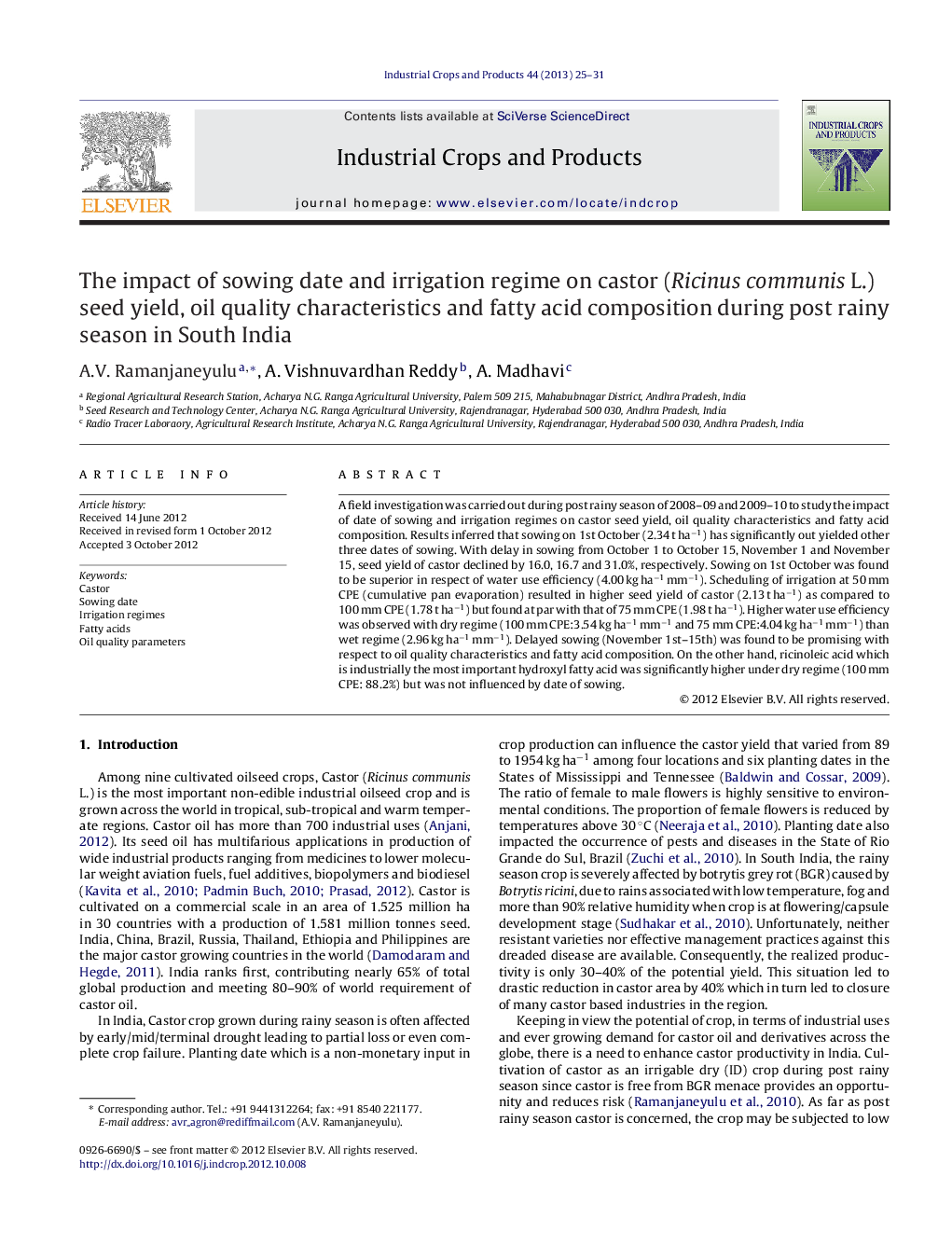| Article ID | Journal | Published Year | Pages | File Type |
|---|---|---|---|---|
| 4513606 | Industrial Crops and Products | 2013 | 7 Pages |
A field investigation was carried out during post rainy season of 2008–09 and 2009–10 to study the impact of date of sowing and irrigation regimes on castor seed yield, oil quality characteristics and fatty acid composition. Results inferred that sowing on 1st October (2.34 t ha−1) has significantly out yielded other three dates of sowing. With delay in sowing from October 1 to October 15, November 1 and November 15, seed yield of castor declined by 16.0, 16.7 and 31.0%, respectively. Sowing on 1st October was found to be superior in respect of water use efficiency (4.00 kg ha−1 mm−1). Scheduling of irrigation at 50 mm CPE (cumulative pan evaporation) resulted in higher seed yield of castor (2.13 t ha−1) as compared to 100 mm CPE (1.78 t ha−1) but found at par with that of 75 mm CPE (1.98 t ha−1). Higher water use efficiency was observed with dry regime (100 mm CPE:3.54 kg ha−1 mm−1 and 75 mm CPE:4.04 kg ha−1 mm−1) than wet regime (2.96 kg ha−1 mm−1). Delayed sowing (November 1st–15th) was found to be promising with respect to oil quality characteristics and fatty acid composition. On the other hand, ricinoleic acid which is industrially the most important hydroxyl fatty acid was significantly higher under dry regime (100 mm CPE: 88.2%) but was not influenced by date of sowing.
► Early sowing of castor around 1st October is better for higher seed yield and water use efficiency. ► Scheduling irrigation at 50–75 mm CPE can be advocated for realizing higher castor seed yield on alfisols. ► For industrial use, scheduling irrigation at 75–100 mm CPE and delayed sowing (November 1st–15th) is better.
